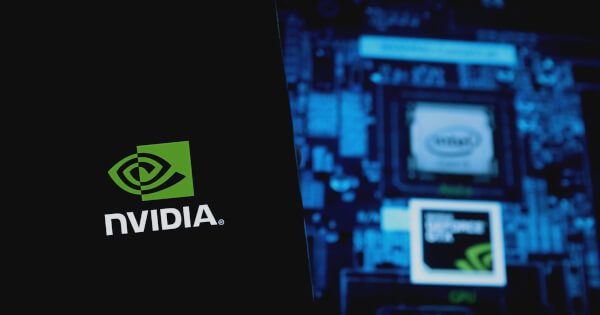- Growing demand for large language models (LLMs) requires enhanced computational power.
- Multi-GPU processing is critical for real-time latency and managing increased user loads.
- Tensor parallelism (TP) optimizes speed and cost by efficiently distributing tasks across GPUs.
- Multi-GPU inference requires significant communication between GPUs, highlighting the need for high-bandwidth interconnects.
- NVSwitch technology enables seamless, high-speed communication across multiple GPUs, boosting performance.
- NVIDIA’s innovations, including the upcoming Blackwell architecture, will double communication speeds, improving performance for trillion-parameter models.
- The NVIDIA GB200 NVL72 system exemplifies these advancements with a 30x increase in real-time trillion-parameter inference speed.
Main AI News:
As large language models (LLMs) grow in complexity, the demand for enhanced computational power rises. Multi-GPU processing is now essential for achieving real-time latency and handling increasing user loads. NVIDIA’s Technical Blog underscores that even if a large model fits within a single state-of-the-art GPU’s memory, token generation speed is dictated by total computational power. Leveraging multiple GPUs enables real-time interactions, with tensor parallelism (TP) optimizing speed and cost by efficiently distributing tasks across GPUs.
In multi-GPU TP inference, model layer computations are split among GPUs, requiring extensive communication to synchronize results. This communication is vital, as Tensor Cores often idle waiting for data. For example, processing a query on Llama 3.1 70B can demand up to 20 GB of data transfer per GPU, underscoring the need for high-bandwidth interconnects.
Effective multi-GPU scaling hinges on high interconnect bandwidth and fast connectivity. NVIDIA’s Hopper Architecture GPUs, with fourth-generation NVLink, achieve speeds of up to 900 GB/s. Coupled with NVSwitch, this speed is consistent across all GPUs, ensuring seamless communication. Systems like NVIDIA’s HGX H100 and H200, which integrate multiple NVSwitch chips, substantially increase bandwidth and overall performance.
Without NVSwitch, GPUs must share bandwidth across point-to-point connections, slowing communication as more GPUs are added. NVSwitch, however, provides 900 GB/s, dramatically improving inference throughput and user experience.
NVIDIA continues to innovate with NVLink and NVSwitch, pushing real-time inference boundaries. The upcoming NVIDIA Blackwell architecture, featuring fifth-generation NVLink, will double communication speeds to 1,800 GB/s. Additionally, new NVSwitch chips and NVLink switch trays will expand NVLink domains, boosting performance for trillion-parameter models.
The NVIDIA GB200 NVL72 system exemplifies these advancements, connecting 36 NVIDIA Grace CPUs with 72 NVIDIA Blackwell GPUs to deliver real-time trillion-parameter inference at speeds 30 times faster than previous generations.
Conclusion:
NVIDIA’s advancements in NVLink and NVSwitch technologies set a new standard for multi-GPU processing, especially for large language models. These developments are crucial for meeting the growing computational demands of LLMs and ensuring real-time, scalable performance. For the market, this means that industries relying on AI-driven solutions can expect significant speed, efficiency, and cost-effectiveness improvements. As NVIDIA continues to push the boundaries with its upcoming Blackwell architecture, companies across various sectors will be better equipped to handle increasingly complex AI tasks, leading to accelerated innovation and competitive advantages in the market.

